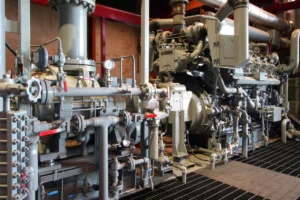The design of a robotic arm has been revealed thanks to a study recently published in Scientific Reports that also reveals its development. This technology is specialized in cleaning porcelain bushings in high voltage substations.
The researchers implemented artificial intelligence and 5G technologies to build a prototype with an integrated control system. The functionality and effectiveness of the robotic arm were successfully tested on the Nanjing power grid.
Why is bushing cleaning important in substations?
Porcelain bushings are essential insulators used in electrical substations for external insulation. Contamination of these components with foreign particles can pose serious risks to related electrical devices and result in electric shock, massive power outages, or even accidents.





It is crucial to maintain periodic cleaning of these insulators to ensure safe and efficient operation of the substations .
Traditional bushing cleaning is typically carried out manually, using water with power off or compressed air with power on. Maintenance personnel perform this task by climbing onto devices or from platforms, using specialized tools such as cloths and brushes.
These manual methods, in addition to being inefficient, represent significant security risks. Instead, automated cleaning systems, such as robots, provide a safer and more efficient alternative, improving process uniformity and effectiveness while minimizing human risks.
Technology and ingenuity of the robotic arm
In this project, an automated robot was developed for the maintenance and cleaning of 500 kV porcelain bushings in substations during power outages.
This robot includes several crucial components: a mobile electric lifting platform that holds the device, a cleaning brush, an operating box, a motion controller, photoelectric switches, and a feed module for precise location. The operating box is equipped with touch controls and buttons that regulate the movement of the platform and the speed of the brush.
Likewise, the brush is made of aluminum alloy and designed in a 120-degree structure , effectively adapting to substation environments. Powered by brushless DC motors, it allows for adaptive speed adjustments based on site conditions. The length of the brush shaft is adjustable, ensuring cleaning efficiency and consistency.
Photoelectric switches are essential for precise location and movement of the robotic arm, detecting the exact position of the bushing. The positioning system ensures perfect alignment of the bushing within the brush ring, reducing the risk of collision due to position misalignments.
Intelligent evaluation and control to ensure a good result
Effective control is vital for the operability of the robotic arm. The researchers used an S7-200 programmable logic controller (PLC) as the central driving unit, processing sensor signals to coordinate each arm movement. The system employs real-time angular feedback control to automatically stabilize the platform, ensuring collisions are avoided during adjustments.
The implementation of edge computing and ultra-wideband technology was crucial to developing precise location and distance control techniques. The integration of the Internet of Things (IoT) with these technologies made it possible to precisely define the work area of the arm, ensuring the isolation of nearby active zones and protecting both equipment and personnel.
How effective did the robotic arm prove to be?
To validate the practical application of this automated system, a prototype was created based on the porcelain structure of a typical 220 kV circuit breaker in a 500 kV substation. Following initial laboratory testing, this prototype was tested on the Nanjing network, where its performance was thoroughly evaluated.
Platform adjustments were completed in just 0.5 seconds and once the arm was positioned, cleaning began automatically. A 4.8 meter 500 kV bushing was cleaned in 30 seconds, demonstrating a notable increase in efficiency compared to traditional manual methods.
The robotic arm , which incorporates feedback using 5G technology, effectively cleaned the porcelain bushings and exceeded design expectations during testing in Nanjing. It confirmed its effectiveness, quality and safety, meeting established performance objectives.
Follow us on social networks and don’t miss any of our publications!
Inspenet.com YouTube LinkedIn Facebook Instagram X













